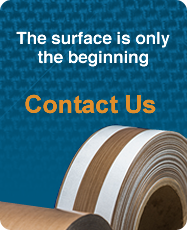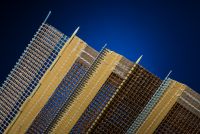
PTFE Coated Fiberglass Fabric Belts
PRECISIONFAB™ PTFE Belts: superior strength and easy release for conveyor applications
The Precision Coating - FTB line of PRECISIONFAB™ industrial conveyor belts combine the non-stick surface and heat resistance of polytetrafluoroethylene (also known as PTFE with the strength and dimensional stability of fiberglass. The product that results is ideal for the demands of industrial conveyor applications.
Dimensionally stabile from -100° to +500°F (-73° to 260°C), PRECISIONFAB™ Belts are non-toxic, odorless, tasteless, and FDA compliant (21 CFR 177.1550) for use in food processing, packaging and handling. In addition, PRECISIONFAB™ PTFE belts offer exceptional durability and extremely low elongation (<1%).
Features:
- Dimensionally stabile from -100° to +500°F (-73° to 260°C)
- PRECISIONFAB™ PTFE Belts are non-toxic, odorless, tasteless, and FDA compliant (21 CFR 177.1550)
- PRECISIONFAB™ industrial conveyor belts offer exceptional durability and extremely low elongation (<1%).
-
Can be used for following applications:
- Screen print dryers
- Cooking and food processing
- Tortilla presses
- Garment fusing presses
- Packaging machinery, including over wrapping, tray wrapping and end sealing machines
- Shrink tunnels
- Rotary band sealers
- Rubber profile extrusion
PRECISIONFAB™ Belt Products…
| Product Name | |
| Premium Grade PTFE Fiberglass Belts ( 4 products ) |
|
| Standard Grade PTFE Fiberglass Belts ( 6 products ) |
|
| Non-Conductive / Anti-Static PTFE Fiberglass Belts (Black) ( 4 products ) |
|
| Porous / Economy Grade Fiberglass PTFE Belts ( 3 products ) |
|
| Crease & Tear Resistant Fiberglass PTFE Belts ( 3 products ) |
|
| PRECISIONMESH™ PTFE Fiberglass Open Mesh Belts ( 5 products ) |
| Displaying 1 to 6 (of 6 products) | Result Pages: 1 |
Application Spotlights
Benefits of PTFE Belts vs. PTFE vs. Stainless Steel and Modular Plastic Belting
How to Measure Belts
Splicing Selection
Splicing Options
Carpeting
PRECISIONFAB™ Porous Belts are used to apply synthetic rubber backing to carpeting. Our PTFE-coated fiberglass conveyor belts convey the uncured synthetic rubber backing through the manufacturing process. The woven fiber (carpet) overlay is bonded to the uncured synthetic rubber as the PTFE coated fiberglass belt conveys it through a curing oven. The PTFE belt’s non-stick properties allow for an excellent release of the cured and bonded synthetic rubber. PRECISIONFAB™ Porous Belts are designed to imprint the pattern of the belt’s finish on the rubber backing. PTFE coated fiberglass products can be supplied in roll form, slit to size or as a finished belt. They are also available in a smooth finish.
Screen Printing
Screen-printing and graphic arts represent a large market for PRECISIONFAB™ Porous & Open Mesh industrial conveyor belt products. Screen printers need a tough, durable belt to convey printed products through a drying oven. Typical screen printing applications include:
- Tape for Silkscreen table covers
- Print dryer belts for T-Shirts, Paper, Card, Metal, Wood, Glass, Plastic Parts
- Feed and take-off belts
- Belts for conveying printed circuit boards through inking or soldering processes
Benefits of PTFE Belts vs. PTFE vs. Stainless Steel and Modular Plastic Belting
- Lower Maintenance Costs: non-stick PTFE belts are easy to clean
- Energy Savings: PTFE belts provide better heat transfer and absorb less energy
- Cost Savings: A PTFE belt costs less to purchase. Its low relative mass allows it to function in a simpler, less expensive pulley and drive system
We prefer the original equipment manufacturer’s specified dimensions for your existing conveyor belt; if this is unavailable the procedure below can be used to determine conveyor belt dimensions.
Please be careful when measuring a used conveyor belt. Existing industrial conveyor belts may be stretched or skewed, making measurements inaccurate.
To Determine Conveyor Belt Dimensions:
- Measure belt width, edge to edge
- Measure belt length
If the existing belt is in good condition:
- Lay belt on the floor and measure from end of the belt to the other.
If the existing belt is badly deteriorated:
- Center the take-up pulley and measure the path of the belt through the dryer using a tape measure
A number of splicing options are available to suit a wide variety of application requirements.
- Metallic Splices: Clipper & Alligator Lacing: The most durable splice, and the easiest to use. An alligator or clipper type lacing is locked into reinforced belt ends. The laced ends are then meshed and joined together by a pin. A coverflap can be added to these splices to reduce mark-off and heat transfer to your material.
- Non-Metallic Splices: A softseal splice or notched splice is perfect when metal lacing cannot be used. The notched splice is effective when a very smooth release surface is needed.
- Endless Splices: Butt splices and overlap splices are all made to be endless. Endless splices are available in multiple widths and angles.
- Edge Reinforcements: Precision Coating offers a wide range of edge reinforcements for belting and fabricated parts. In addition to protecting the fabric edges from wear, abrasion, and snagging, these reinforcements strengthen the edge so that it can support guide strips, dots, and other guiding and tracking devices.
To assure the best performance and accurate tracking, we recommend ordering PRECISIONFAB™ BELTS with splices wherever possible. We offer all the standard splices. The Precision Coating technical service department can help determine the best splicing option for your specific application.
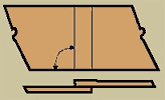 |
HEAT SEALED OVERLAP This is the standard splice for most applications. The belt ends are overlapped from 1/2" to 2" then heat sealed. The splice can be stitched for additional strength. |
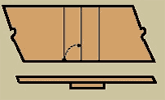 |
HEAT SEALED BUTT This splice is perfect in applications where a smooth belt surface is required. The ends of the belt are butted together. A reinforcement fabric is positioned beneath the joint, then heat sealed into place. For additional strength this splice can also be stitched. |
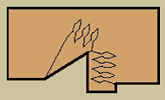 |
FINGER SPLICE A finger splice provides an excellent continuous release surface. Die Cut interlocking fingers are joined, reinforced and heat sealed into place. |
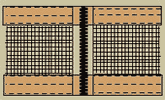 |
ALLIGATOR/CLIPPING SPLICE An exceptionally strong metal splice, formed by metal lacing that is meshed together and joined by inserting a metal pin. This flexible splice enables a belt to be installed without taking the machine apart. |
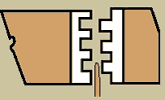 |
FABRIC PIN SPLICE Similar to the Alligator/Clipper splice but without any metal components. |
Contact us to find out more about Industrial Belts.





